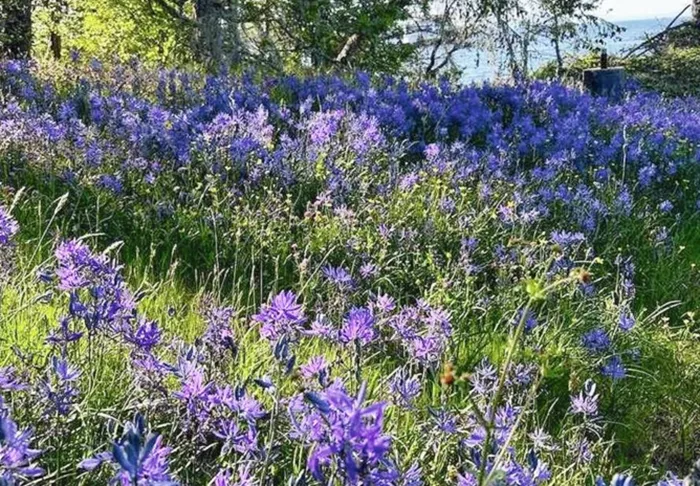The Impact of Invasive Plant Species in British Columbia.
Invasive plant species, such as English ivy, pose significant threats to the delicate ecosystems of British Columbia. While they may appear attractive as they climb and spread, these foreign plants aggressively compete with native flora, altering landscapes and disrupting ecological relationships.
The Changing Landscape
Hunter Jarratt, a restoration consultant at KiKi Nursery in Ladysmith, emphasizes the consequences of urbanization on Vancouver Island’s natural habitats. The introduction of non-native species has led to a decline in biodiversity, making it challenging for native plants to survive. As Jarratt notes, “They can’t really compete in a lot of places,” and the future of native species looks grim without immediate intervention. The increasing pace of invasive species encroachment, exacerbated by climate change, threatens the intricate web of life that has evolved over centuries.
Consequences for Native Ecosystems
The presence of invasive species can have catastrophic effects on local ecosystems. Many native species rely on specific plants for survival, including specialist bees like the Andrena astragali, which depends on the toxic death camas for its life cycle. The decline of native plants jeopardizes the food web, affecting everything from insects to larger wildlife.
Notable Invasive Species on Vancouver Island
Himalayan Blackberry
While its berries are edible, the Himalayan blackberry threatens native blackberry species by monopolizing resources. It can grow up to five meters tall and spread over large areas, forming dense thickets that hinder animal movement.
Yellow Flag Iris
Originating from Northern Africa and Europe, this noxious weed can quickly take over wetland ecosystems, drastically altering their structure. Its extensive root systems enable it to spread rapidly, choking out native plants.
English Ivy
Known for its fast growth and ability to smother other plants, English ivy weakens trees by climbing them and increasing their susceptibility to wind damage. This evergreen vine thrives in low-light conditions, making it particularly problematic in shaded areas.
Scotch Broom
This European plant can live for up to 25 years and produce seeds that remain viable in the soil for decades. Its presence has led to significant concerns in coastal communities, prompting the establishment of organizations like Broombusters to combat its spread.
Tansy Ragwort
With the ability to produce 150,000 seeds per plant, tansy ragwort poses a risk to livestock and taints honey. It thrives in disturbed areas and can outcompete native plants, further endangering local biodiversity.
Canada Thistle
Despite its name, Canada thistle is not native to the region. This plant is often mistaken for other thistles but can cause significant problems due to its aggressive growth and resource competition.
Giant Hogweed
This extremely toxic plant can grow up to five meters tall and poses serious risks to human health due to its photosensitivity. Contact with its sap can lead to severe burns and scarring.
Common Tansy
Introduced for medicinal purposes, common tansy has become a noxious weed that threatens both livestock and human health. Its rapid growth and toxicity make it a significant concern in disturbed habitats.
Knotweed
Various types of knotweed present significant challenges for land management. They are known for their aggressive growth and extensive root systems, which make eradication difficult.
Taking Action Against Invasive Species
To combat the spread of invasive plants, residents can take several proactive steps. Jessica Bayley, executive director of the Coastal Invasive Species Committee, emphasizes the importance of education and awareness. By learning about local invasive species and reporting sightings, individuals can contribute to removal efforts. The Coastal Invasive Species
Committee provides resources and programs, such as the Knot On My Property initiative, which covers the cost of treatment for knotweed on private lands.
Management Practices
Effective management of invasive plants varies by species. For instance, while some can be safely pulled by hand, others, like knotweed, require more strategic approaches, often involving herbicide application. Bayley cautions that improper removal techniques can exacerbate infestations.
Prevention Through Native Planting
Planting a diverse array of native species is one of the most effective ways to prevent invasive plants from establishing. By choosing native plants that are well-adapted to local conditions, residents can create resilient ecosystems that support local wildlife and outcompete invasive species. Recommended native plants include salal and deer fern, which can provide excellent alternatives to invasive species like English ivy.
Conclusion
The fight against invasive species in British Columbia is crucial for preserving the region’s rich biodiversity. By understanding the impact of these plants and taking proactive measures, individuals can help protect native ecosystems for future generations. Promoting awareness, responsible management, and the planting of native species will play a vital role in this ongoing battle.
Related topics:
- Didn’t get daffodils? Plant spring-blooming onion bulbs this month instead
- Plant Bulbs Now for Beautiful Spring Flowers
- Aster Flowers Thrive Best with This Vibrant Fall Companion Plant


